5g Experience

How will 5G change the entertainment industry ?
The advent of 5G technology is set to revolutionize various sectors, including the entertainment industry. With its faster speeds, lower latency, and increased connectivity, 5G promises to transform how content is created, distributed, and consumed. In this article, we will explore the potential changes that 5G can bring to the entertainment industry. One of the most significant changes that 5G will bring to the entertainment industry is an enhanced streaming experience. With 5G's faster download and upload speeds, users can enjoy high-quality video and audio content without buffering or lag issues. This means that viewers can watch their favorite movies, TV shows, or live events in real-time, with no interruptions. Moreover, 5G's low latency ensures that there are minimal delays between the broadcaster and the viewer, making it ideal for live streaming events such as sports games or concerts. Another area where 5G can have a profound impact is in virtual reality (VR) and augmented reality (AR) experiences. These technologies require high bandwidth and low latency to function effectively, which makes them perfect candidates for 5G networks. With 5G's capabilities, VR and AR experiences can become more immersive and realistic than ever before. For example, users could attend virtual concerts or sporting events from the comfort of their homes, feeling as if they were actually there. Additionally, AR applications could be used to enhance traditional media by adding interactive elements to books, magazines, or even billboards. Cloud gaming is another area where 5G can make a significant difference. With 5G's fast speeds and low latency, gamers can play high-quality games without needing powerful hardware devices. Instead, they can stream games directly from the cloud, using their smartphones, tablets, or even smart TVs as controllers. This means that gamers no longer need expensive consoles or PCs to enjoy their favorite games; they only need a stable internet connection and a compatible device. Moreover, cloud gaming opens up new opportunities for developers to create more complex and immersive games without worrying about hardware limitations. Finally, 5G can also enable more interactive content creation and consumption. With 5G's increased connectivity and faster speeds, creators can produce interactive videos, podcasts, or other forms of media that allow viewers to engage with the content in real-time. For example, viewers could participate in polls or quizzes during live shows or interact with characters in a movie through AR features on their devices. This level of interactivity not only enhances the viewing experience but also creates new opportunities for advertisers looking to reach engaged audiences.
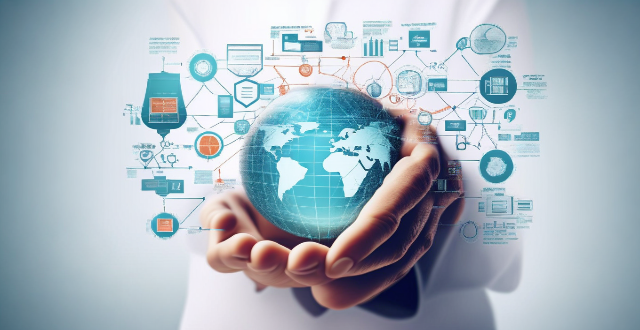
What new possibilities does 5G open up for businesses ?
The advent of 5G technology has ushered in a new era of possibilities for businesses across various industries, offering faster speeds, lower latency, and increased capacity. This topic explores the key opportunities that 5G presents to companies, including enhanced connectivity and real-time data access, expansion of the Internet of Things (IoT), applications of Augmented Reality (AR) and Virtual Reality (VR), improved customer experience, automation and efficiency, and edge computing. With these advancements, businesses can streamline operations, increase efficiency, and drive innovation.

How does 5G affect battery life in smartphones ?
With the advent of 5G technology, concerns have arisen about its impact on smartphone battery life. In this article, we explore how 5G affects battery life and provide strategies for conserving battery while still enjoying the benefits of 5G speeds. First, we define 5G as the fifth-generation wireless technology that promises faster data transfer speeds, lower latency, and greater connectivity than its predecessor, 4G LTE. However, the higher frequency bands used by 5G require more energy to transmit and receive signals compared to 4G. Additionally, the increased number of small cell sites needed for 5G coverage also requires more power to operate. Second, we discuss how 5G can affect battery life through increased data consumption and higher power consumption. With faster speeds and improved connectivity, users are likely to use their devices more frequently and for longer periods of time, leading to a drain on the battery. Furthermore, network management issues may cause unnecessary strain on the battery. Third, we provide strategies for conserving battery life when using a 5G network. These include turning off unnecessary features, using low power mode, optimizing screen settings, and updating your device regularly. By implementing these strategies, you can help extend your device's battery life while still being able to take advantage of 5G speeds.

What challenges need to be overcome for widespread adoption of 5G ?
The widespread adoption of 5G technology faces several challenges that need to be addressed before it can become a ubiquitous part of our lives, including high costs, regulatory approvals, technical hurdles, public perception, network compatibility and interoperability, training and education, market competition, and environmental impact. Overcoming these challenges requires collaborative efforts from industry leaders, governments, researchers, and consumers alike. By addressing these issues head-on, we can pave the way for a future where 5G technology truly transforms how we live, work, and connect with each other.

What is the difference between 2G, 3G, 4G, and 5G communication base stations ?
The progression from 2G to 5G in wireless communication technologies represents a monumental leap in terms of speed, capacity, latency, and the range of services that can be delivered. Each generation brings its own set of improvements and capabilities, shaping the way we communicate and use technology. Here's a detailed breakdown of the differences between 2G, 3G, 4G, and 5G base stations.

Will 5G replace wired broadband connections ?
This article discusses the potential of 5G technology to replace wired broadband connections. It highlights the key features of 5G, including higher speeds, lower latency, and greater capacity. The article also emphasizes the advantages of wired broadband connections, such as reliability, consistent speeds, and security. While 5G has its pros, such as mobility, scalability, and cost-effectiveness, it also has its cons, including coverage issues, limited range, and infrastructure costs. The article concludes that while 5G has the potential to revolutionize wireless connectivity, it is unlikely to completely replace wired broadband connections in the near future.
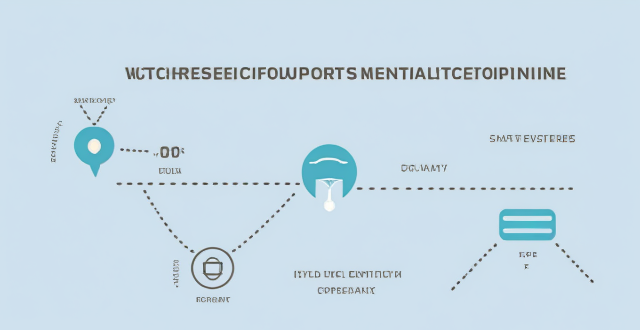
Can existing devices support 5G network ?
This article discusses whether existing devices can support 5G network and what factors influence this compatibility. The most important factor determining whether a device can support 5G is its hardware, including the modem, antenna, and other components required for 5G connectivity. Another factor that can affect compatibility is the software on your device, such as an outdated operating system or lack of necessary drivers and firmware updates. Finally, even if your device has the necessary hardware and software, you still need to have a carrier that supports 5G in your area. To check if your device is compatible with 5G, you can check your device's specifications, ensure that it is running the latest operating system and has all necessary drivers and firmware updates installed, contact your carrier to see if they offer 5G service in your area and if your plan includes access to this network, and consult with a professional or contact the manufacturer for assistance.

What is 5G network and how does it work ?
The 5G network is the fifth generation of mobile networks, offering significant improvements in speed, capacity, and responsiveness over its predecessor, 4G. It utilizes higher frequencies, advanced antenna technology, and reduced latency to provide enhanced mobile broadband, lower latency, increased reliability, massive IoT connectivity, and improved energy efficiency. The rollout of 5G worldwide is expected to enable new applications and services that were not possible with previous network technologies.
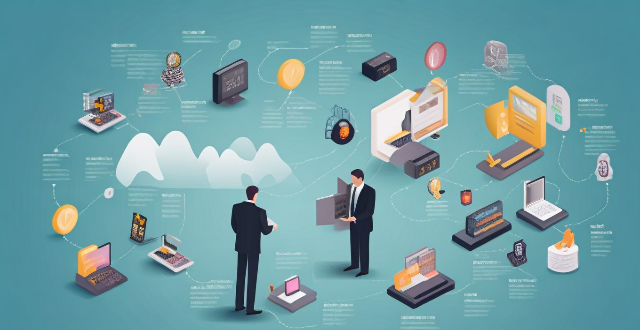
What impact has 5G technology had on the telecommunications industry ?
The advent of 5G technology has revolutionized the telecommunications industry, offering faster speeds, lower latency, and increased capacity. Key impacts include enhanced mobile broadband, ultra-reliable low-latency communications, and massive Internet of Things connectivity. These advancements have led to changes in network infrastructure, service innovation, economic growth, and social development. However, challenges such as coverage limitations, compatibility issues, spectrum allocation, and security concerns need to be addressed. The full potential of 5G is yet to be realized but holds immense promise for positive change across various sectors.

Is 5G network more secure than 4G ?
The question of whether 5G is more secure than 4G has been a topic of discussion among tech enthusiasts and security experts. While it's true that 5G brings many improvements over its predecessor, including faster speeds and lower latency, the question of security is complex and multifaceted. Let's dive into some key aspects to consider: ## Encryption and Authentication ### Key Points: - **Stronger Encryption**: 5G uses more advanced encryption methods compared to 4G. - **Enhanced Authentication Procedures**: 5G introduces new authentication mechanisms. #### Explanation: 5G networks employ stronger encryption standards than 4G. For instance, it uses algorithms like AES-256 for confidentiality, which is considered very secure. Moreover, 5G includes enhanced authentication procedures such as network function protection and improved identity privacy features. These enhancements make it harder for attackers to intercept or spoof user data. ## Network Slicing and Isolation ### Key Points: - **Network Slicing**: Allows multiple virtual networks on a shared physical infrastructure. - **Improved Isolation**: Helps in containing potential security breaches. #### Explanation: One of the innovative features of 5G is network slicing, which enables operators to create multiple virtual networks tailored for different services or customers. This can improve security by isolating sensitive communications from general traffic, reducing the risk of cross-contamination if one slice gets compromised. ## IoT and Device Density ### Key Points: - **Increased Connectivity**: 5G is designed to support a much higher number of devices. - **Potential Vulnerabilities**: More connected devices could mean more entry points for attacks. #### Explanation: With the rise of IoT (Internet of Things), 5G is expected to connect many more devices than 4G. While this opens up opportunities for smart cities, autonomous vehicles, etc., it also increases the potential attack surface. Each device could be a vulnerability that hackers might exploit. ## Security Standards and Regulations ### Key Points: - **Evolving Standards**: 5G security standards are still evolving. - **International Cooperation**: Global cooperation is essential for setting uniform security regulations. #### Explanation: As with any new technology, the security standards for 5G are still being developed and refined. There's an ongoing effort from international bodies to ensure that 5G networks worldwide adhere to stringent security guidelines. However, the effectiveness of these measures will depend on how consistently they are implemented and enforced across different countries and providers. ## Conclusion In conclusion, while 5G brings several improvements that can enhance security—such as stronger encryption and better authentication mechanisms—it also introduces new challenges due to increased connectivity and the need for global cooperation on security standards. Therefore, it's not straightforward to declare that 5G is inherently more secure than 4G without considering various factors and ongoing developments in both technologies.

When will 5G networks be available globally ?
The availability of 5G networks globally depends on technological development, regulatory frameworks, and infrastructure deployment. Technological advancements such as millimeter-wave spectrum and advanced antenna designs have paved the way for faster data speeds and higher capacity in wireless networks. Regulatory frameworks are crucial in determining the availability of 5G networks globally, as governments need to establish policies and standards that support its deployment while ensuring consumer safety. Infrastructure deployment is another critical factor, as building out the necessary network infrastructure requires significant investment and planning. Despite these challenges, several trends suggest that 5G networks will become more widely available over the next few years, including rapid adoption, increasing investment, and government support.

What are the benefits of using a 5G network ?
The advent of the 5G network has brought about significant changes in the way we use technology. It offers several benefits that were not possible with earlier networks. Here are some of the key advantages: 1. **Faster Speeds**: Compared to 4G, 5G can provide download and upload speeds that are up to 10 times faster. 2. **Lower Latency**: With 5G, the delay is reduced significantly, making real-time communication more efficient. 3. **Increased Capacity**: 5G networks can handle more devices and connections at the same time. 4. **Improved Reliability**: They use advanced signal processing techniques to ensure stable connections. 5. **New Use Cases**: 5G opens up opportunities for new applications like virtual reality and smart cities.

How fast is the 5G network compared to 4G ?
The fifth generation of wireless systems (5G) is significantly faster than the fourth generation (4G). The speeds achievable with 5G can vary depending on several factors, including network congestion, device capabilities, and the specific technology implementation. However, here are some general comparisons to give you an idea of the differences: - Download Speeds: Typical download speeds for 4G can range from 10 to 50 Mbps (Megabits per second), while with 5G, download speeds can start around 100 Mbps and can go up to multiple Gbps (Gigabits per second), with peak theoretical speeds reaching as high as 20 Gbps. - Latency: Latency in 4G networks typically falls between 30 to 50 milliseconds, while one of the major improvements with 5G is its reduced latency, which can be as low as 1 millisecond. - Bandwidth and Capacity: While 4G offers sufficient bandwidth for many current applications, it can struggle under heavy loads or during high-traffic events, while 5G is designed to handle much higher capacity and density of connections, making it better suited for crowded areas and large-scale deployments. With faster speeds and lower latency, streaming services can offer higher resolutions with less buffering, meaning smoother playback for 4K and even 8K video content. 5G's low latency makes it ideal for Augmented Reality (AR) and Virtual Reality (VR) experiences that require real-time interactions without delays. 5G can connect many more devices simultaneously than 4G, facilitating the growth of smart cities, autonomous vehicles, and other IoT applications. Improved network reliability and coverage mean fewer dropped calls and better performance in rural or remote areas. In summary, while 4G has been a transformative technology that has enabled mobile internet access on a large scale, 5G promises to take connectivity to the next level with speeds that are potentially dozens of times faster and latency that is nearly imperceptible. These advancements open up new possibilities for various industries and technologies that were not feasible with 4G.
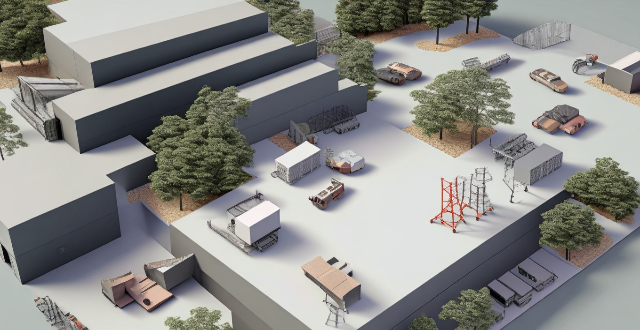
How much does it cost to upgrade to 5G network ?
The cost of upgrading to a 5G network varies depending on several factors, including your current plan, the carrier you are using, and the device you have. If you want to take advantage of 5G speeds, you will need a 5G-compatible device which can range from $200 to over $1000. The cost of upgrading to a 5G plan also depends on your carrier, with some offering unlimited data plans starting at around $70 per month. In addition to a new device and plan, you may also need to purchase accessories such as cases or screen protectors that are compatible with your new device. Finally, if you are installing a 5G network in your home or office, there may be additional costs associated with installation fees or equipment rental fees.

What impact will 5G have on the Internet of Things (IoT) ?
The emergence of 5G technology is poised to revolutionize the Internet of Things (IoT) landscape by offering significant improvements in speed, latency, connectivity, scalability, security, and privacy. These advancements will not only enhance existing IoT applications but also pave the way for new use cases such as autonomous vehicles, smart cities, and industrial automation. The increased data transmission speeds and lower latency of 5G networks enable faster and more efficient communication between IoT devices, leading to improved performance and reduced downtime. Moreover, the increased connectivity and scalability of 5G networks allow for the connection of a larger number of devices without degrading performance, which is crucial for industries like smart cities and industrial automation. Additionally, 5G's enhanced security features and better privacy protection address critical concerns related to IoT devices. Overall, the advent of 5G technology is expected to transform the IoT landscape by enabling new applications and improving the performance and reliability of existing ones.
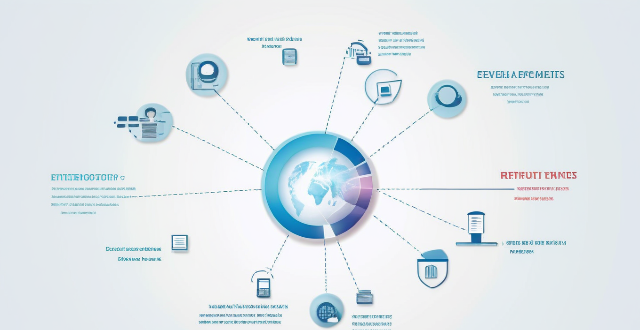
How does network slicing work in 5G technology ?
Network slicing is a feature of 5G technology that allows operators to create multiple virtual networks on a shared physical infrastructure. This enables them to offer customized services with specific quality of service (QoS) and quality of experience (QoE) requirements for different types of customers and applications. The implementation of network slicing involves several key components such as Network Function Virtualization (NFV), Software-Defined Networking (SDN), Network Management and Orchestration (MANO), and Policy Management. The steps involved in implementing network slicing include requirement analysis, resource allocation, virtual network function deployment, resource management, policy enforcement, monitoring and optimization, and lifecycle management. Network slicing offers benefits such as customization, resource efficiency, scalability, improved performance, and enhanced security.

Can rural areas benefit from 5G network deployment ?
The advent of 5G technology promises to revolutionize the way we live, work, and communicate. With its faster speeds, lower latency, and increased capacity, 5G has the potential to transform various sectors, including healthcare, education, transportation, and more. However, the question remains: can rural areas also benefit from 5G network deployment? Benefits of 5G in Rural Areas: - Improved Connectivity: Faster Internet Speeds and Reduced Latency - Enhanced Quality of Service: Better Coverage and Increased Capacity - Economic Development: Job Creation and Business Opportunities - Social Benefits: Education and Healthcare Challenges and Considerations: - Infrastructure Costs: High Initial Investment and Maintenance Expenses - Geographic Barriers: Topography and Population Density - Regulatory Hurdles: Spectrum Allocation and Compatibility Issues Conclusion: While there are certainly challenges associated with deploying 5G networks in rural areas, the potential benefits are significant. Improved connectivity, enhanced quality of service, economic development, and social benefits all stand to gain from the introduction of 5G technology. As long as these challenges are addressed through careful planning, collaboration between stakeholders, and appropriate investment, rural areas can indeed benefit from 5G network deployment.

What is 5G technology and how does it differ from 4G ?
5G technology, the fifth generation of wireless networks, is set to revolutionize mobile networking by offering faster speeds, lower latency, and increased capacity compared to 4G. Key differences between 5G and 4G include improvements in speed (up to 20 Gbps for 5G vs. 10-30 Mbps for 4G), latency (as low as 1 millisecond for 5G vs. 50 milliseconds for 4G), and network capacity (supporting up to a million devices per square kilometer for 5G). 5G also utilizes advanced network architecture and a wider bandwidth, incorporating both sub-6 GHz and millimeter-wave spectrum. The advantages of 5G over 4G include enhanced mobile broadband, ultra-reliable low latency communications, and massive machine type communications, making it suitable for applications like remote surgery, autonomous vehicles, and smart cities. The potential impact of 5G spans various sectors such as industrial automation, healthcare, transportation, entertainment, and smart city development, promising to connect people and machines in unprecedented ways and open doors to numerous opportunities and advancements.
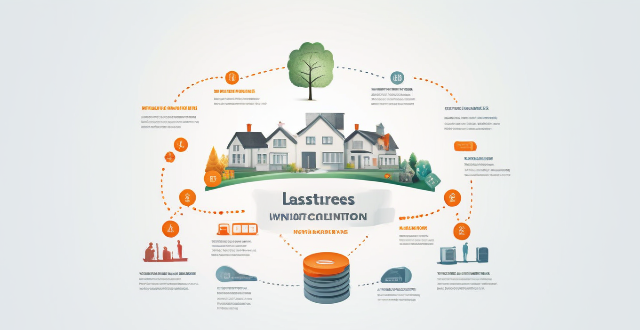
What are the latest wireless communication standards ?
This article discusses the latest wireless communication standards, including 5G, Wi-Fi 6, Bluetooth 5.2, and LoRaWAN. It highlights their key features, such as enhanced mobile broadband for 5G, OFDMA and MU-MIMO for Wi-Fi 6, LE Audio and direction finding for Bluetooth 5.2, and long range and low power consumption for LoRaWAN. The article also mentions potential use cases for each standard, such as smart cities and autonomous vehicles for 5G, home networks and public Wi-Fi hotspots for Wi-Fi 6, personal audio devices and wearable technology for Bluetooth 5.2, and smart agriculture and environmental monitoring for LoRaWAN.

Which Asian countries should I visit for a cultural experience ?
Asian countries offer a diverse range of cultural experiences, including festivals, traditional practices, and historic landmarks. Recommended destinations include Japan's Kyoto and Tokyo, China's Beijing and Shanghai, India's Delhi and Agra, Thailand's Bangkok and Chiang Mai, Vietnam's Hanoi and Ho Chi Minh City, and South Korea's Seoul and Busan. Each country offers unique cuisine and activities for travelers seeking a rich cultural experience.
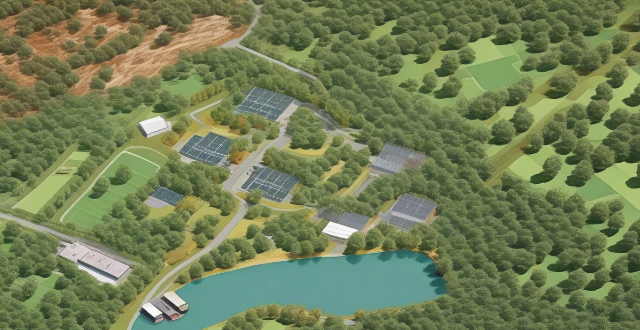
Where can I find the best skydiving experience ?
Skydiving is an exhilarating sport that offers a thrilling freefall experience from great heights. If you're looking for the best skydiving experience, consider factors such as location, safety measures, and cost. Top destinations include Florida in the USA, New Zealand, Switzerland, and South Africa, each offering unique landscapes and experiences. Remember to prioritize safety by choosing reputable skydiving centers with experienced instructors and proper equipment.

How can I book local experience activities online ?
### How to Book Local Experience Activities Online Booking local experience activities online involves several steps, from identifying your interests to making a reservation on an online platform. Here's a detailed guide: 1. **Identify Your Interests**: Determine the type of local experiences you're interested in, such as food tours, cooking classes, historical walks, outdoor adventures, or cultural workshops. 2. **Research Online Platforms**: Look into platforms like Airbnb Experiences, GetYourGuide, Viator, Klook, and TripAdvisor that offer a wide range of activities led by local hosts. 3. **Read Reviews and Ratings**: Before booking, read reviews and ratings from previous participants to gauge the quality and authenticity of the experience. 4. **Check Availability and Booking Terms**: Ensure the activity is available on your desired date and time, and review booking terms including cancellation policies and any requirements. 5. **Make the Reservation**: Select your preferred date and time slot, provide participant details, and enter payment information to secure the booking. 6. **Confirmation and Preparation**: After booking, receive a confirmation email with details about the activity, meeting point, and special instructions. Use this information to prepare for the experience. 7. **Enjoy Your Local Experience**: Arrive at the designated location on time, engage with the host and other participants, and immerse yourself fully in the activity. Take photos to remember the experience by.

How much do local experience activities usually cost ?
The cost of local experience activities can vary widely depending on factors such as location, duration, exclusivity, group size, timing, and inclusions. Guided walking tours, workshops, cultural events, and outdoor adventures all have different price ranges, but there are ways to save money such as booking in advance, taking advantage of group discounts, combining tickets, looking for local deals, and exploring free options. By considering these factors and utilizing tips for saving money, you can enjoy enriching experiences without breaking the bank.

How can technology be used to enhance the food festival experience ?
Technology can enhance the food festival experience by offering convenience, customization, real-time updates, and interactive experiences. Online ordering platforms allow attendees to avoid long queues and have food delivered directly to their location. Mobile apps provide features like interactive maps, push notifications, and feedback systems. VR/AR technologies offer immersive experiences such as virtual food tours and interactive cooking classes. Incorporating these technological advancements into event planning can create a more enjoyable and memorable experience for all attendees while increasing engagement with the brand.
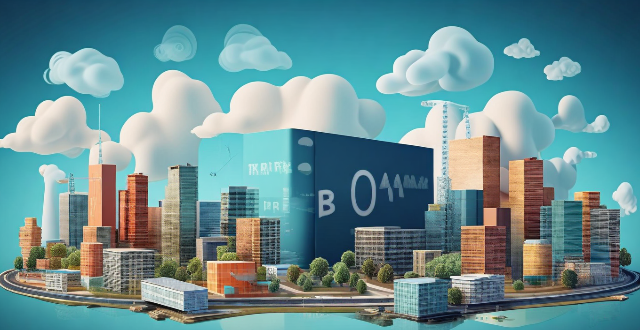
How does Fintech improve customer experience in banking ?
Fintech has transformed the banking industry by providing innovative solutions that improve customer experience. It offers personalized services, faster transactions, enhanced security, and innovative features. Fintech companies provide a seamless user interface, personalized financial advice, customized products, faster transactions, instant access to information, streamlined processes, robust security measures, transparent fees, regulatory compliance, mobile payments, peer-to-peer lending, crowdfunding, and exploration of cryptocurrencies and blockchain technology. These advancements have significantly improved customer experience in banking and will continue to shape the future of banking as technology evolves.

What makes a hotel considered a "luxury" experience ?
**What Makes a Hotel Considered a "Luxury" Experience?** A luxury hotel experience is defined by several key factors that set it apart from standard accommodations. These factors are often the result of meticulous attention to detail, exceptional service, and the incorporation of high-end amenities and features. Let's delve into the specifics of what makes a hotel considered luxurious: 1\. Exceptional Service: Personalized attention, professionalism, and courtesy are paramount. This includes butler services, anticipatory service, 24/7 concierge, polite and efficient staff, and multilingual capabilities. 2\. High-Quality Accommodations: The focus is on comfort and elegance. Room amenities include premium bedding, luxurious toiletries, and advanced in-room technology. Design and decor are tasteful, with spacious layouts. 3\. Exclusive Amenities: On-site facilities like fine dining restaurants, full-service spas, and state-of-the-art fitness centers set these hotels apart. Special features such as infinity pools and private beaches or pools add to the indulgence. 4\. Unique Experiences: Bespoke activities and extraordinary events make each stay memorable. Customized excursions and cultural immersion opportunities cater to individual interests. 5\. Location and Accessibility: Prime locations in iconic settings or with easy accessibility to major attractions define luxury hotels. Privacy and security measures ensure guest safety and peace of mind. 6\. Attention to Detail: Consistency in quality, environmental considerations, and thoughtful touches elevate the luxury experience. Immaculate cleanliness, sustainability practices, and personalized services make each stay exceptional. In summary, a luxury hotel experience is characterized by superior service, elegant accommodations, exclusive amenities, unique experiences, prime locations, and consistent attention to detail. It's about creating an environment where guests feel pampered and catered to at every turn, making their stay memorable and exceeding their expectations.

What is network latency and how does it impact user experience ?
Network latency is the delay in data transmission over a network, influenced by factors such as distance, congestion, and hardware limitations. It negatively impacts user experience in online gaming, video conferencing, streaming services, web browsing, and online shopping, leading to frustration and reduced engagement. Reducing latency through optimized network infrastructure can enhance user satisfaction.

What are some must-try local experience activities in Tokyo ?
Tokyo offers a variety of local experience activities that cater to different interests, including sushi making classes, tea ceremonies, ninja training, kimono experiences, sake tasting, Sumida River cruises, traditional craft workshops, ramen museum and cooking class, robot restaurant show, Harajuku street fashion tour, baseball game at Tokyo Dome, Tsukiji Fish Market tour, Asakusa Temple and traditional shopping street, Kabuki theatre performance, and Odaiba Beach and DiverCity Tokyo Plaza. These activities provide an authentic Tokyo experience and allow visitors to fully appreciate the diverse facets of Tokyo's vibrant lifestyle.

How has technology changed the way we experience sports ?
Technology has revolutionized the way we experience sports, from enhanced viewing experiences to instant access to information, improved training and performance, and increased fan engagement and interaction. High-definition broadcasts, multi-angle replays, and interactive platforms have made watching sports more immersive. Live score updates and in-depth analysis provide fans with real-time information. Advanced analytics and wearable technology help teams and athletes optimize training and performance. Virtual reality and social media create a sense of community and foster discussions beyond the traditional boundaries of the stadium. Overall, technology continues to shape the future of sports in exciting new ways.

Is it normal to experience anxiety before an exam ?
Is it normal to experience anxiety before an exam? Yes, it is absolutely normal to experience anxiety before an exam. In fact, it's a common reaction that many students face. This feeling of unease or nervousness is often referred to as "test anxiety" or "exam stress." Let's delve into this topic further: Understanding Exam Anxiety Exam anxiety can manifest in various ways, such as physical symptoms like sweating, trembling hands, or a racing heartbeat. Mental symptoms like difficulty concentrating or thinking negatively about the exam are also common. Emotional symptoms like feeling overwhelmed or fearful may also occur. Why Does It Happen? Several factors can contribute to exam anxiety, including performance pressure, lack of preparation, past experiences, and perfectionism. Coping with Exam Anxiety There are several strategies to manage exam anxiety effectively, such as adequate preparation, relaxation techniques, positive self-talk, time management, and maintaining a healthy lifestyle. Seeking Support If your anxiety is severe or persistent, consider seeking support from tutoring, study groups, or professional help. Final Thoughts Remember, it's okay to feel anxious before an exam. Acknowledge your feelings without judgment and utilize the strategies mentioned above to manage your anxiety. With preparation and the right mindset, you can approach your exams with confidence and competence.